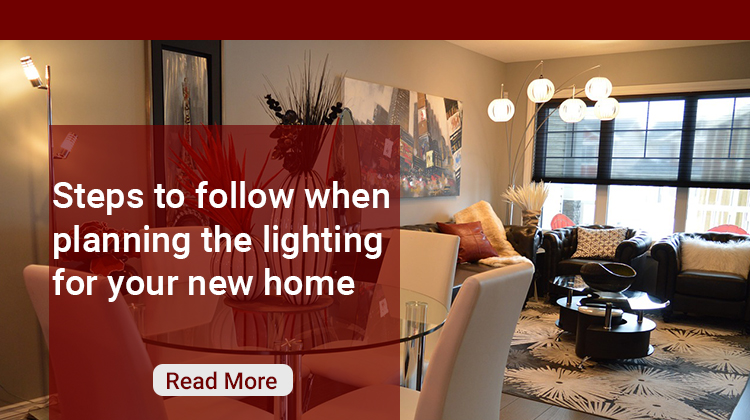To furnish a newly built home after buying a plot and knowing where to start can be overwhelming especially lighting your new home properly. Initially, it may seem like a piece of cake, but once you start defining the details (budget, style, function, and specs), the project can be challenging and technical.
To avoid feeling overwhelmed before you even start, follow these steps to follow when planning the lighting for your new home like a professional.
1. Set the budget
It may seem like an obvious step, but it’s amazing how quickly housing projects, big or small, can take a toll on your bank balance. To avoid a monetary disaster, decide how much lighting you need, designate items you want to show off, and other areas where you know you need to be more cost-conscious. Creative separation of your functional needs is a key component of Good Small Design: it’s all about stacking, nesting, and pulling double duty.
2. Choose a theme, or design type
Just as you’ll stick to a color scheme when decorating a space, you need to consider the style and theme of the fixtures you want to install. Since lighting is a vital component in creating the mood and tone of a space, find products that speak to you and the space in particular. If you have an unmistakable style, the lighting should do the same.
When thinking of a chandelier, an elaborate and sparkling chandelier often comes to mind. With its industrial chandelier, work stead pares this idea down to capture the function of a chandelier, a ceiling light, with the simplicity of clean lines and flexible design. The three-arm chandelier can be reconfigured in a variety of ways, making it an adaptable piece for many interior spaces. Structured as a horizontal fixture, the industrial chandelier can be hung just three feet from the ceiling, or as a vertical piece, it can be hung five feet for a more dramatic effect. Made of steel, repurposed industrial joints, and vintage Hubbell sockets, the fixture has a vintage, mechanical aesthetic, while its minimalist design, exposed wires, and a shade-less bulbs have an undeniably modern sensibility.
3. Layered lighting
The basic principle is to layer three types of lighting: ambient, accent, and activity lighting. Ambient lighting deals with creating general lighting, occupying a more functional role. Accent lighting is often where decorative fixtures such as chandeliers, pendants, and linear lighting come into play. Activity lighting also comes in many forms, providing targeted lighting for workspaces throughout the home. Once logical steps you follow when planning the lighting for your new home, all these elements come together, the interior becomes a complete (and well-lit) space.
4. Start with the light statement
Once you have a theme in mind, start with the most visible object that will define the space, such as a modern chandelier or pendant (this could be one of the notable items). From there, choosing the remaining lighting in the same style as that fixture will help narrow down the search.
5. Consider the requirements of each room
As each room has its function, some areas should naturally be more atmospheric and others more activity-oriented. For example, the bedroom would do well with more accent lighting as it is a space to relax and sleep. The kitchen is the area for thoughtful tasks like preparing food, so the space requires bright, functional lighting before anything else.
6. Be precise with your measurements
Once you have the basic dimensions of the space and its function, the math for finding the correct sized fixture is easily done. For example, kitchens and living rooms have different requirements; planning the lighting above a kitchen island is very different from choosing a large enough fixture to fill a living room.
7. Get creative
We have talked about specific types of lighting for each room, but sometimes it’s okay to break the rules. Think outside a product’s normal function and try unexpected applications—perhaps a pendant for a bedside lamp or an adjustable wall light fitting as a task lamp in the kitchen. For a simple, low-cost bedside reading light with a dash of industrial style.
8. Stay educated about new technology
Let us face it, LED lighting is more common than ever these days, and there are different rules when it comes to installing LED fixtures in your home. With that said, consult your contractor or electrician for the proper voltage and dimming options required for LED fixtures. The LED lighting in the slide is just one of the high-tech elements in the house that can be adjusted from a smartphone or tablet. A computer system in the basement controls the house’s screens and the security and heating systems.
9. Start designing!
The last and final step is to dive right into your home’s lighting design. Getting the planning process going is often the hardest part, but with these helpful tips, you will be able to install a unique lighting scheme in no time.

